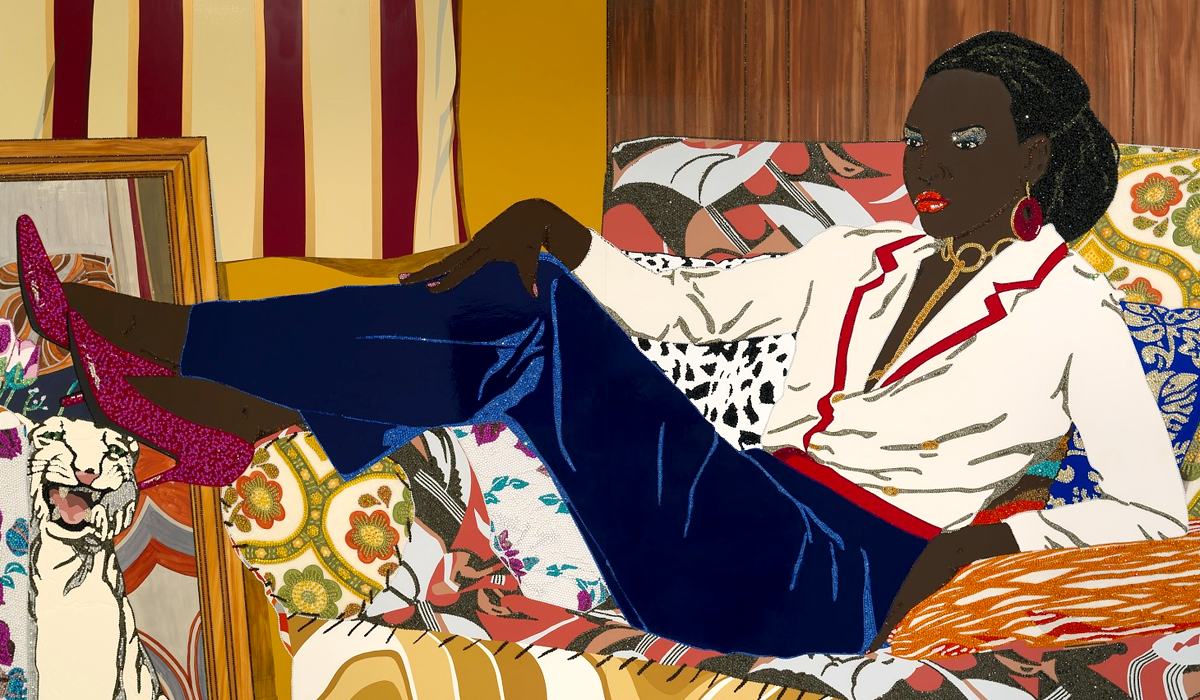A Woman’s Place Is in the Curriculum: Teaching Women’s History through American Art and Portraiture
By: Anne Showalter, Digital Interpretation Specialist, Smithsonian American Art Museum
As the digital interpretation specialist at the Smithsonian American Art Museum (SAAM), I am always looking for opportunities to share our collection beyond the physical walls of the museum itself. Recently I worked with a team of educators at my museum and the National Portrait Gallery to develop/produce/create a teaching poster set and related webinar series designed to bring diverse women’s stories into the classroom through American art and portraiture. Funded by the Smithsonian American Women’s History Initiative – Because of Her Story – our project aims to connect these artworks to relevant, interdisciplinary themes and support teachers with ideas for using them.
Women’s stories have always been integral to American history, but they have often been marginalized or erased from K-12 education – presented as peripheral to the main story or highlighted only during Women’s History Month. Without question, women of color and members of the LGBTQ+ community have been doubly – sometimes triply – marginalized. In fall 2019, SAAM and NPG educators co-facilitated webinars designed to bring some of these untold stories into focus. Each of the three thematic webinars has its own Learning Lab collection, which includes two images from the teaching poster set, as well as additional SAAM and NPG works, along with suggested visual literacy strategies:
Persisting and Resisting: Exploring Women as Activists How have women led the way in activism and social justice movements? Look closely at portraits of Dolores Huerta, Gloria Steinem, and Dorothy Pitman Hughes. Unpack the messages at the heart of Jaune Quick-To-See Smith’s State Names and Ester Hernández’s Sun Mad.
Who Tells Your Story? Exploring Women and Identity What is the importance of being able to express yourself and voice your story? The story of Pocahontas has been told – and mistold – for centuries, while the extraordinary life of Henrietta Lacks has only recently been brought to light. Works by contemporary artists Mickalene Thomas and Christina Fernandez celebrate strong women of color and open up conversations about representation and agency.
Remaking the Rules: Exploring Women Who Broke Barriers How have women created space for themselves in the arts and culture? Lorraine Hansberry was the first black woman to have a play produced on Broadway. Alma Thomas was the first black woman to have a solo exhibition at the Whitney Museum of American Art. Artist Romaine Brooks defied societal expectations regarding how women should dress and whom they should love. Attorney Juanita Jackson Mitchell blazed the trail for black women in legal activism.
Perhaps the biggest challenge that my colleagues and I faced while working on the project was making difficult decisions about who to include. We were able to highlight only a handful of the remarkable women whose stories our museums’ collections can tell. Visit the American Women’s History Initiative website to learn more about how the initiative uses technology to amplify diverse women’s voices and look for the initiative’s hashtag #BecauseOfHerStory on other Learning Lab collections.
Image: Portrait of Mnonja (detail), by Mickalene Thomas.
Mickalene Thomas creates large-scale paintings of African American women to explore notions of sexuality and race through rituals associated with female beauty. Her models dress up and pose for photographs on a studio set; Thomas works from these photographs to produce finished works. Rhinestones and sequins recall folk art traditions as well as the jewelry and cosmetics that can enhance or mask a woman's identity. Mnonja exudes dignity and self-assurance as she reclines against a wood-paneled background redolent of a seventies-era family room.
Smithsonian American Art Museum
Replies
Upload a Resource
Select a resource
- Image
- Video
- Audio
- Document
- Website
- No elements found. Consider changing the search query.
Upload a Resource
Leaders
Members
Message
Message




Share News